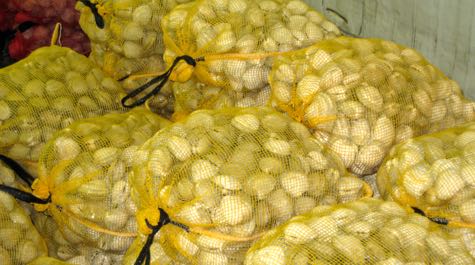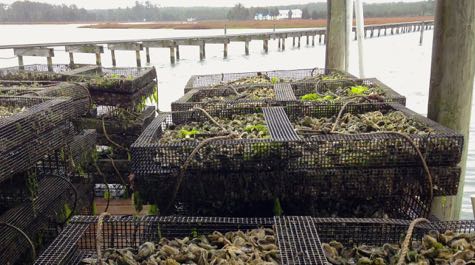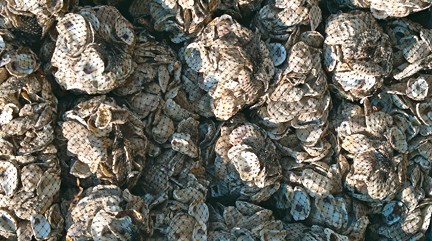Virginia continues to lead in clam and oyster aquaculture
VIMS survey shows $48.3 in farm-gate value in 2015
Virginia shellfish farmers sold $48.3 million in clams and oysters in 2015, with hard clam sales of $32.3 million once again leading the nation and $16 million in oyster sales tops among East Coast states.
The values are according to the 10th annual Virginia Shellfish Aquaculture Situation and Outlook Report, a survey of shellfish farmers in the state conducted by the Marine Advisory Services program at the Virginia Institute of Marine Science.
The survey and report provide an annual assessment of trends and projections for Virginia’s shellfish aquaculture industry. The latest report is based on an industry survey completed by during the first quarter of 2016.
Report co-author Karen Hudson says, “Virginia growers planted 135.6 million single oysters in 2015, a 27% increase from 2014 and right on target with grower expectations from the previous survey. Their outlook for 2016 suggests a further 14% increase in planted oysters.”
Although the number of oysters sold decreased by 11% in 2015 compared to the previous year—from 39.8 million to 35 million—Hudson and co-author Tom Murray don’t see great significance in the drop.
“We’re more interested in long-term trends than any single year-to-year variations,” says Hudson. Murray notes that oyster growers remain optimistic, with survey respondents predicting a 32% increase in numbers sold in the coming year, which if reached would translate to nearly 47 million market oysters.
The number of hard clams sold in Virginia in 2015 also decreased—to 185 million from the previous year’s all-time record of 243 million—but growers reported a 7% increase in the number of clams planted, and predict an additional 2% increase in plantings for the coming year. Virginia remains the nationwide leader in growing hard clams.
The 2015 results are drawn from 79 completed surveys returned to VIMS. Respondents include 15 clam growers, 66 intensive oyster growers, 7 extensive oyster growers, 5 shellfish hatcheries, and 9 growers who cultured both molluscs.
In intensive culture, growers plant single oysters in cages, racks, or floats, then carefully tend them for harvest primarily in the half-shell market. In extensive culture, growers allow hatchery-raised oyster larvae to settle on oyster shells in large tanks on land. They plant the resulting “spat-on-shell” directly on bottom almost immediately, and then allow them to grow freely into clumps of oysters that are harvested for sale as shucked meat.




